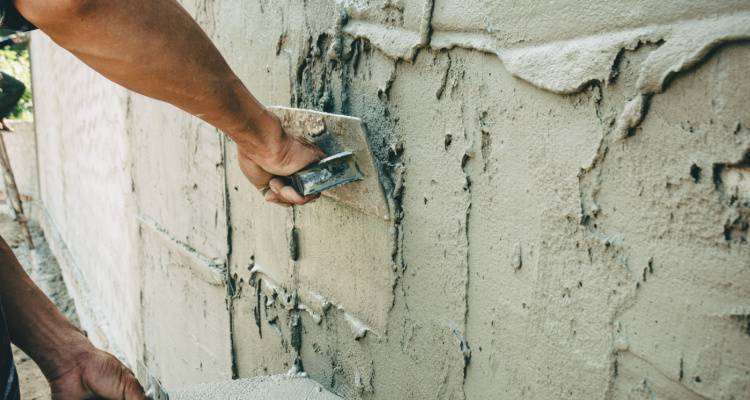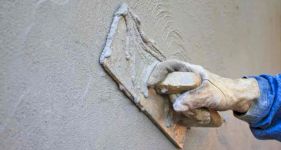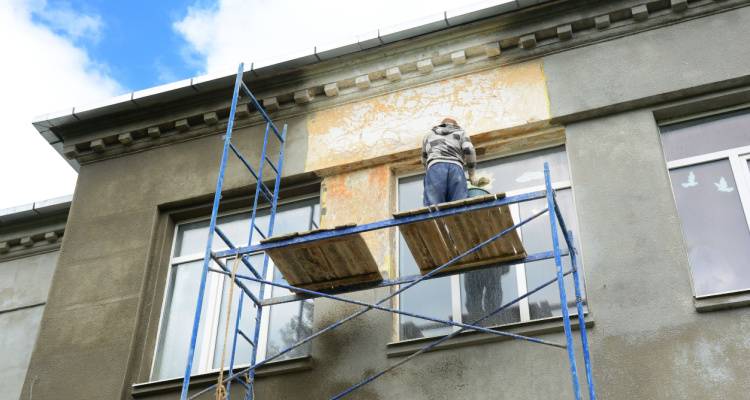Acrylic Render Cost
- The average cost of acrylic rendering is £30 per m².
- For an average semi-detached house of around 200m² the total supply cost will be in the region of £6,000.
- An overview of acrylic rendering costs for different-sized houses.
- Hidden costs, labour charges, and supply costs associated with acrylic rendering.
- Additional considerations for your acrylic rendering project.
Acrylic rendering is a modern, flexible exterior coating known for its durability, smooth finish, and relatively affordable costs compared to other finishes. Made with acrylic resin (a type of plastic), it offers more strength and flexibility than traditional sand and cement render, making it less likely to crack over time.
Homeowners often choose acrylic rendering for its clean, contemporary look and wide choice of colours. It’s also low-maintenance, waterproof, and resistant to algae growth, ideal for keeping your home’s exterior looking fresh for years with minimal upkeep.
In this guide, we’ll break down the costs of acrylic rendering, including materials, labour, and potential extras, so you can plan your project with confidence. You can also get free quotes from acrylic renderer specialists in your area to compare prices and find the best deal.
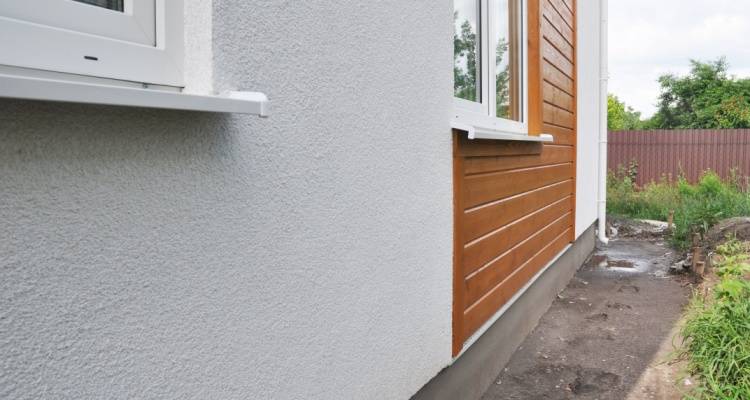
£6,500
Table of Contents
- How Much is Acrylic Rendering?
- Supply Cost of Acrylic Rendering
- Additional Acrylic Rendering Costs
- Labour Cost of Acrylic Rendering & Timescales
- Factors That Impact Acrylic Rendering Costs
- Building Regulations for Acrylic Rendering Jobs
- Types of Acrylic Rendering Finishes
- Alternative Types of Rendering
- Removing Existing Rendering: Considerations and Costs
- Checklist: Hiring Contractors for Acrylic Rendering
- FAQs
How Much is Acrylic Rendering?
The cost of acrylic render per m² is £30. The average cost of acrylic render to cover a semi-detached house of around 200m² ranges from £6,000 to £7,000, while a detached house of around 300m² starts at £9,000.
Acrylic render cost per m² can vary based on market conditions and supply and demand, as well as geographical location - and tradesmen can usually benefit from reduced rates as a result of bulk buying.
Acrylic Rendering Prices
| Property Type | Service | Estimated Cost | Time Required |
|---|---|---|---|
| 2-bed bungalow (100m²) | Acrylic render application | £3,000 to £4,000 | 1 day, touch-dry in a few hours |
| 3-bed semi-detached (200m²) | Acrylic render application | £6,000 to £7,000 | 1 day, touch-dry in a few hours |
| 4-bed detached (300m²) | Acrylic render application | £9,000+ | 1 to 2 days, touch-dry in a few hours |
Supply Cost of Acrylic Rendering
On average, acrylic render costs £30 per m². Further to this, a range of equipment will be needed:
| Item | Cost |
|---|---|
| Mixing bucket | £10 |
| Mixing paddle | £10 |
| Trowel | £15 |
| Float | £15 |
When seeking out the supplies needed for acrylic render application, it’s a good idea to first consider your contractor as they will be able to tap into bulk buying discounts which can help to streamline your project costs.
Additional Acrylic Rendering Costs
Scaffolding
Scaffolding is likely to cost between £750 to £900 to fit a semi-detached house for painting or plastering access, with the cost rising to £900 to £1,150 for a detached property. This is for a 1-week hire period, and prices can fluctuate based on your location and the period of your hire.
Waste Disposal and Skip Hire
If you are having old rendering removed, you are likely to need a skip present. Mini skips are around £90, while the largest skips can cost closer to £800.
Large skips are most suited to rendering projects. A 20-yard skip will cost between £300 to £600, with a 40-yard costing between £400 to £800.
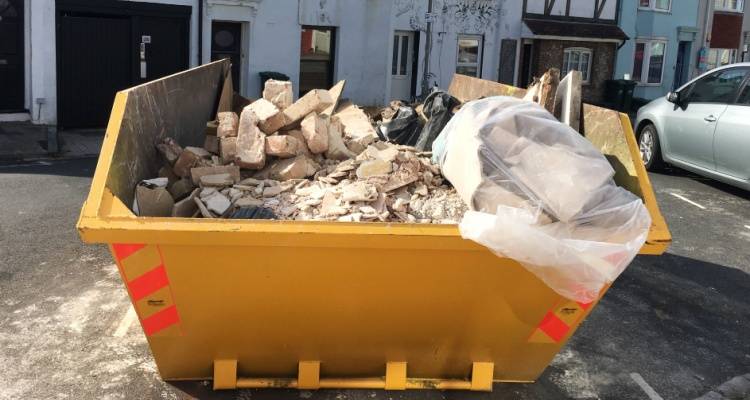
Costs in London are expected to be between £50 to £350 higher than in other locations, such as the North of the UK, due to increased demand. You will need to ensure that your skip is suitable for the type of waste you will be producing, as incorrect labelling can lead to fines.
Permits
You’ll need to check with your local council to see if you need a permit for your skip hire, which can range from £10 to £70 depending on your location. You can face fines of £1,000 if you don’t get a permit before having your skip delivered if you’re storing it on the roadside.
Labour Cost of Acrylic Rendering & Timescales
Your labour costs are likely to be between £130 to £250 per day, per rendering specialist. It’s important to note that rendering is not something that can be rushed. Therefore, long project periods are to be expected, resulting in high costs.
However, enlisting the help of a tradesman can help to cut down your supply costs as they will be able to gather discounts on materials due to their bulk buying for other projects - making it far cheaper for you in the long run when compared to buying all your materials one by one.
Acrylic render is faster to dry than other traditional renders, so you can expect this to be complete within a few days, rather than weeks.
Factors That Impact Acrylic Rendering Costs
Being aware of the factors that can affect your project’s budget before you start collecting quotes can be a great way of keeping your costs down - and can help you to identify cheap fixes, where applicable, when looking to replace your home’s rendering.
Location
Let’s start with a non-negotiable: your property’s location. Unfortunately, for those living in central London, your prices are likely to be higher than those seen in the North of the UK due to demand levels.
As is common in London, if your home doesn’t have a driveway or a designated area for off-road parking, you will likely need to buy your contractor a parking permit for the duration of their time with you.
Another consideration will be if skip hire is required, and if there is a place for that to be stored privately. If you need to leave your skip on the side of the road, you’ll need a permit to do so - costing between £10 and £70, with a fine of £1,000 if you use the road for your skip and don’t get a permit in the first place.
Ease of Access
One more non-negotiable concerns whether your property overhangs a public pavement or road. You may need to apply for temporary pavement closure if so, as your contractor will be working at height and can run the risk of dropping debris onto passers-by which is a health and safety issue.
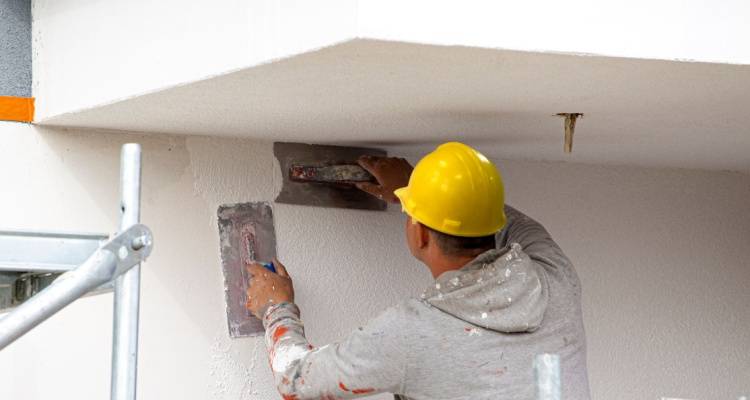
These costs can vary depending on your county, so it’s best to check with your local council for your rates. Lastly, if your home spans multiple storeys, you’re likely to encounter higher scaffolding charges, too.
Condition of Substrate
Pebbledash rendering is known for its damage-inducing removal. If you have had this removed, and have suffered damage to your substrate as a result, you will need to take care of this before any new rendering can be applied.
It’s also a good idea to assess your home’s thermal efficiency if you have had pebbledash render taken off, and ensure that your new render coating will provide similar insulating properties - or that your contractor will add in more insulation for you instead.
Complexity of Application Process
The bigger your house, the harder the application - and if you opt for a textured acrylic render finish instead of a smooth one, you will see your costs rise further. Textures are achieved by hand, whereas smooth finishes can be met by spray application - the former being more time-consuming and impactful on your budget, so if you want a cost-effective route, opt for a smooth finish.
If you’re choosing to render over your existing render, you must assess it for structural integrity. Failure to do so can mean that you run the risk of the acrylic render pulling down the original coating in a sheet, which is both a dangerous and time-consuming error to fix.
The application of acrylic render - especially when opting for a specialised finish - is not something that should be attempted as a DIY project.
Building Regulations for Acrylic Rendering Jobs
In most cases, the application of acrylic render to your property is classed as a minor alteration rather than a significant development, and usually won’t require planning permission. However, stricter rules will apply if your home is a listed building or is located within a conservation area.
If your home is a listed building, your property’s exterior will be protected, and you will be prevented from changing the appearance to conserve its original state. For example, if you own a protected regency townhouse, you will not be permitted to apply acrylic render to change the colour or texture of the property’s exterior.
Similarly, if you live in a conservation area you will encounter restrictions. These are in place to ensure that properties keep a similar look to one another to fit in with the historic characteristics of the area.
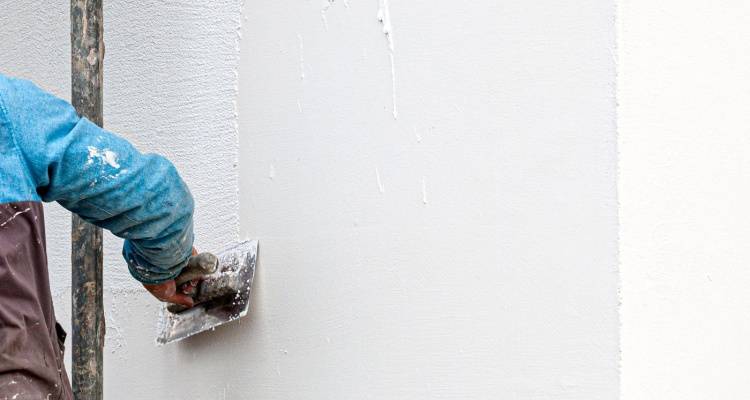
For those not living in listed buildings or conservation areas, the rules will change - but you may still be subject to building regulations approval. Your rendering specialist will need to consider both the U-value (thermal transmittance) and the reciprocal R-value (minimum thermal resistance) when making changes to your property’s exterior, such as removing any existing render and replacing it with a different type, to ensure the insulation isn’t compromised.
While acrylic render application will largely fall under permitted development, you may still need to have an assessment as alterations to the exterior can have impacts on fire safety, structural stability and insulation, all of which fall under the jurisdiction of building regulations approval.
In any case, it’s advised that you check with your local planning authority or conservation officer before you start any external render project to ensure that you are adhering to all of your guidelines.
Types of Acrylic Rendering Finishes
The joy of acrylic render can be seen in the personalisation options - from a range of colours and textures, there is plenty on offer to suit your personality.
Colours
Acrylic render is pre-coloured, meaning there is no need to lay a separate coat of masonry paint once the initial render layer is completed - it’s a far quicker job and is incredibly quick drying when compared to traditional cement renders that may need weeks to cure.
There are many acrylic render colours available, meaning you can opt for practically any shade - as long as it doesn’t obstruct any regulations in your area - giving you greater control over the aesthetic as opposed to cement, sand or pebbledash render that comes in set colours.
Textures
The colour isn’t where the adaptability ends - you can opt for a smooth, textured or patterned finish to your acrylic render. Depending on your application method, you can achieve different looks, with spray application being used for smooth finishes and hand application for textures and patterns.

The more labour-intensive the application, the higher the price - so a smooth finish is cheaper than a stippled, textured finish as it doesn’t require as much skill as the latter.
Alternative Types of Rendering
Let’s take a closer look at some alternative types of rendering to consider if you don’t want to opt for a full removal and re-install.
Repair Existing Render
It’s wise to see if you can simply repair your existing render instead of requiring a full replacement if your issues are just hairline cracks and occasional dents in the surface. Repairing the old render isn’t the best solution if you want to achieve a sleek finish, as fixes are likely to still be noticeable.
Patch repairs for acrylic render usually cost in the region of £300 to £600 for a 5m² and 10m² area respectively. Prices will increase relative to the equipment needed - such as scaffolding hire - and should only be seen as a temporary repair, which will require further upkeep.
Render Over Existing Render
For homeowners with well-maintained rendering already in place, you can opt to render over the existing layer. To do this, your existing render must be assessed by your contractor to check for any damages or structural issues that may cause the original render to fail under the weight of the new material.
If applicable, this solution can prove to be far less labour-intensive than complete removal. This can cost anywhere from £3,000 to £6,000, depending on the size of your home and the height, as well as the duration of equipment hire such as scaffolding and skips.
Clad Over Existing Render
An option suitable again for homeowners with well-maintained existing rendering is to clad over your rendering. This will cost around £3,800, and take between two to three days, which is a far quicker option when compared to rendering removal.
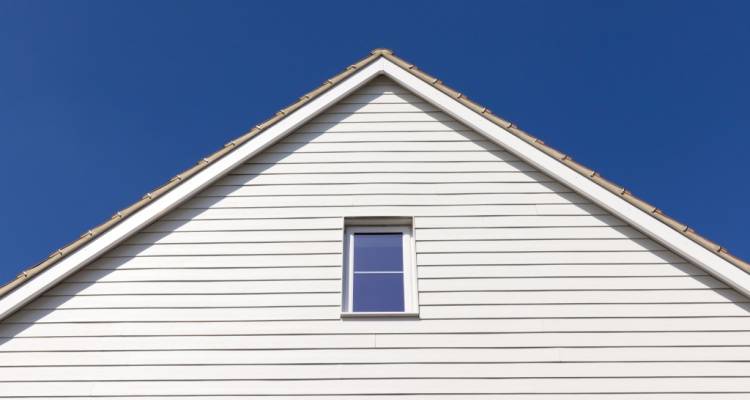
Your cladding material - timber, UPVC, aluminium - will determine your project costs, with timber being the cheapest and aluminium being the most expensive option.
Paint Over Existing Render
There is, of course, the option to paint the house exterior. This will only be suitable for properties with a smooth exterior, free of cracks or dents, as these will only become more prominent once masonry paint has been added.
The general cost of masonry paint is between £10 to £25 per m² - which equates to £800 to £2,000 for supply costs only for a two-bed semi-detached house. This is for supply costs only, and you’ll need to factor in your labourer’s day rate, as well as any necessary scaffolding or skip hire.
Different Types of Render
While acrylic render is a popular and durable choice, it's one of several options available. For a detailed breakdown of costs across all render types, please see our complete guide to rendering a house.
Below is a comparison of the key features to help you decide which material is right for your home.
| Render Type | Key Feature | Flexibility | Breathability | Drying Time |
|---|---|---|---|---|
| Acrylic | Best All-Rounder | High (Resists cracking) | Medium | Very Fast (2-3 days) |
| Silicone | Self-Cleaning | High | Very High | Fast |
| Lime | Most Breathable | Very High (Self-healing) | Very High (Essential for old homes) | Very Slow |
| Monocouche | One-Coat | Low-Medium (More brittle) | Medium | Medium-Fast |
| Cement | Traditional/Budget | Very Low (Rigid) | Low | Very Slow (Weeks) |
Removing Existing Rendering: Considerations and Costs
Depending on the condition of your existing rendering, it might be best to remove your existing coating before applying acrylic render. This is especially true if you have badly damaged rendering, as adding something new on top of it can lead to further damage, tearing off both layers of render and damaging your substrate.
If you have pebbledash rendering on your property, you will likely want to remove it to ensure you get an even application of your new acrylic render. The cost of removing the existing pebbledash render can be anywhere from £2,100 to £7,800 and above, depending on your house size.
Checklist: Hiring Contractors for Acrylic Rendering
The quality of your project is only as good as the skill of your contractor. Here’s what to take into consideration when selecting your trader to ensure you are getting the best results for your money.
- Are they qualified for the job? While there aren’t set qualifications for external renderers, it’s a good test of character to see if they have industry-recognised certifications. Ask if they hold a relevant CSCS card, which verifies their qualifications and health and safety training. You can also check if they are registered with a Government Endorsed Quality Scheme like TrustMark.
- Are they insured? You’ll want to ensure your trader has proof of liability insurance. This is essential to keep you covered in the event of an accident at your residence that causes damage to either the home, yourself, or the worker.
- Do they understand building regulations? A professional renderer will understand how the project impacts your home's thermal performance. As mentioned in our 'Building Regulations' section, they must consider the U-value and R-value to ensure insulation isn't compromised, especially when replacing an existing render.
- Can they provide references and a portfolio? Find a contractor with a proven track record in acrylic render application. Take a look at their website and any relevant reviews, paying attention to comments on work ethic, timekeeping, and cleanliness. You can also check their MyJobQuote profile to read verified reviews, see ratings, and view their past work.
- Have you compared detailed quotes? It’s essential to collect several quotes from different acrylic rendering specialists. Ask for an itemised quote that breaks down all potential 'hidden costs'—find out if you need to arrange for skip hire, scaffolding, or parking permits, and what the time contingency is.
- What guarantees are included? Ask if they have any maintenance guarantees if the render fails in the first few years of application. A reputable trader should be confident in the quality and durability of their workmanship.
Following these steps will help you choose a plasterer or renderer with a proven track record, ensuring your home's new exterior is completed to the highest standard.



